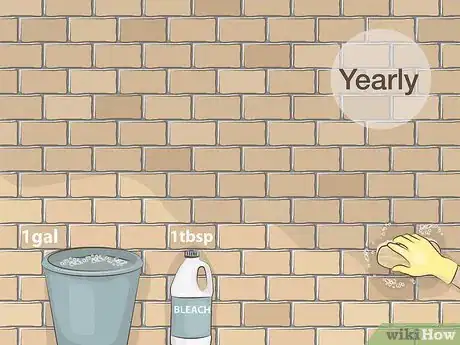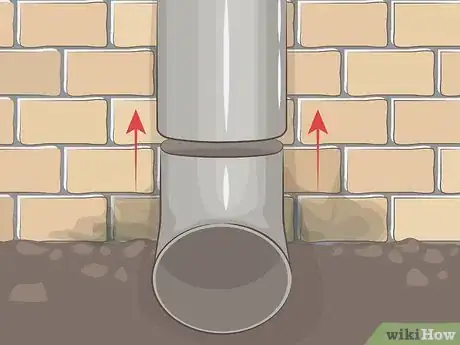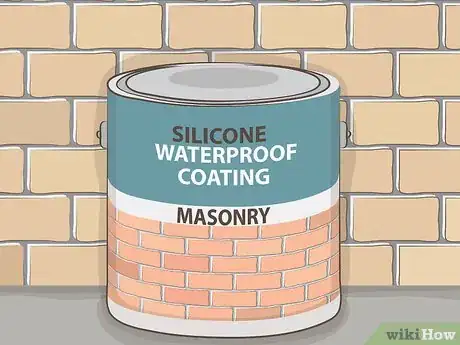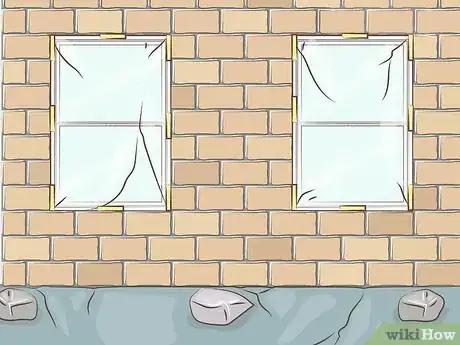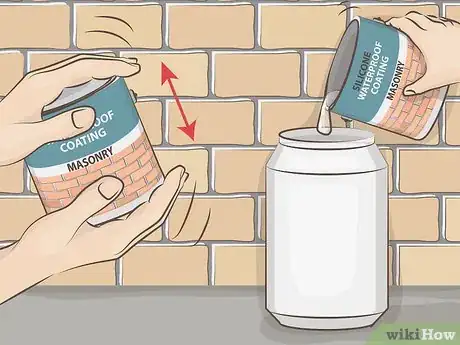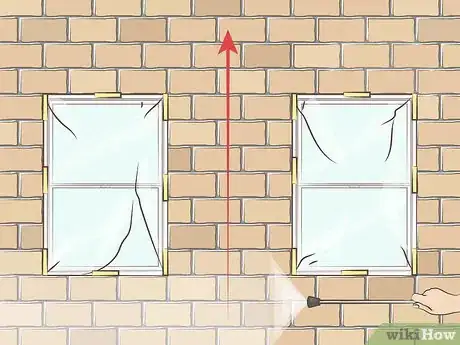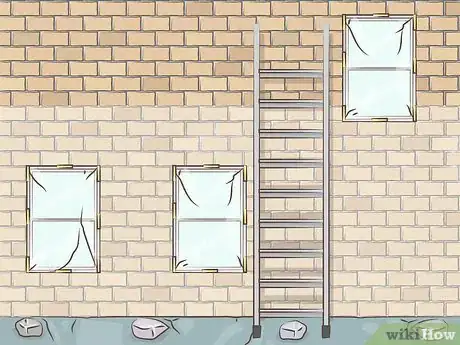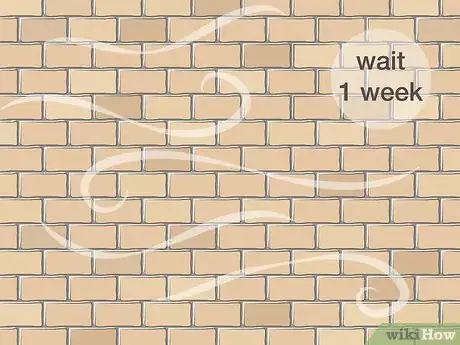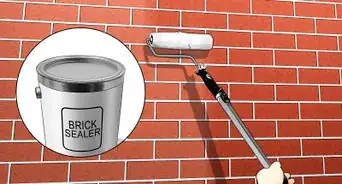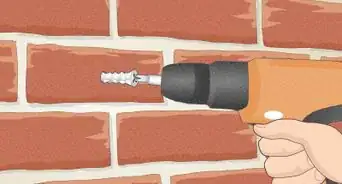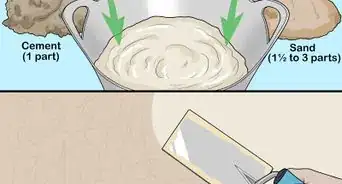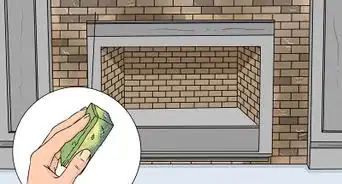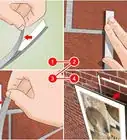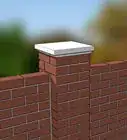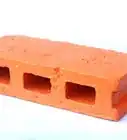This article was co-authored by Melanie Garcia and by wikiHow staff writer, Eric McClure. Melanie Garcia is the Co-Owner of Oranges & Lemons, a small, family cleaning business based in Downtown Los Angeles, California (DTLA) in operation for over 40 years. Oranges & Lemons operates while partnering with the National Domestic Workers Alliance and Hand in Hand: Domestic Employers Network.
There are 10 references cited in this article, which can be found at the bottom of the page.
This article has been viewed 12,396 times.
In most cases, waterproofing your bricks is unnecessary since bricks are naturally very good at repelling water. The pores in the bricks also help the material dry out after it gets wet, and sealing the bricks can trap moisture in a bricks.[1] On a brick building, the best way to protect bricks from the rain is to make sure that your gutters and downspouts direct water away from your home. However, if your bricks are struggling to dry out after it rains or the brick starts crumbling when it gets wet, apply a waterproof or water-repellent coating to the bricks to protect them from heavy rain.
Steps
Taking Preventative Measures
-
1Clean your brick once a year to prevent dirt from trapping moisture. Grab a garden hose with a nozzle attachment. Spray your bricks down with a firm stream of water.[2] Let the bricks air dry for 6-12 hours. Then, get some rubber gloves and a thick-bristled brush. Fill a bucket with 1 US gal (3.8 L) of water and 1 US tbsp (15 mL) of bleach. Put on rubber gloves and scrub the brick with the bleach and water before rinsing it off. Work in 3 by 3 ft (0.91 by 0.91 m) sections until you’ve scrubbed every portion of your brick.[3]
- Do this when the temperature is 45–55 °F (7–13 °C) for the best results.
- Cleaning your bricks once a year will remove dirt and residue from the pores in the bricks. This will keep the pores in the brick clear which will make it easier for your bricks to dry out when they get wet.
Variation: You can use muriatic acid instead of bleach if your bricks are especially filthy. If you do this, use a paint brush instead of a hard-bristled brush. Let the acid and water soak into the bricks for 4-5 minutes before rinsing it off. Be sure to wear long sleeves, rubber gloves, and protective eyewear when working with muriatic acid.
-
2Direct downspouts to pour water away from your foundation on a brick building. Take a walk around your building and find the spouts where the water feeds down from your gutters. Make sure that all of these spouts are pointing away from your building. If they aren’t, purchase a downspout extension from a construction supply store and tape or screw it into your current downspout to redirect water away from the bricks.[4]
- If water is pooling up around the base of your building, it can get trapped in the bricks and weaken them over time.
- If you have a brick pathway, consider digging 2–3 in (5.1–7.6 cm) runoff trenches between the brick and the surrounding area to give water somewhere to drain off.
Advertisement -
3Fix leaky gutters on a brick building to keep water from building up. The next time it rains, take a stroll around your building. Look for leaky or sagging gutters where the water is spilling directly on to your bricks. If the gutters are leaking, use silicone sealant to fill in gaps in the gutters once the rain stops. If the gutter is sagging, use gutter spikes to nail the gutters at an angle where water will flow evenly towards the downspout.[5]
- If the water is pouring out of your gutters into one location on your bricks, it can build up over time and soak into the grout. This can wear your bricks down, damage the grout, and cause mold to grow in your interior walls.
Waterproofing Your Brick
-
1Purchase a silicone-based waterproof coating designed for masonry. Waterproof coating is a silicone-based sealant that will protect bricks from wearing down over time as they get pummeled by weather. Purchase a waterproof coating designed specifically for masonry from a construction supply store. You need 1 US gal (3.8 L) of coating for every 125 sq ft (11.6 m2) of brick, so pick up as many gallons as you think you’ll need based on bricks you plan on waterproofing.[6]
- You can measure the length and height of each brick surface and multiply it to determine how many gallons you need if you’d like. You don’t need to subtract for doors or windows if you’re waterproofing walls, since it’s a good idea to have some extra coating left over. Most people don’t bother measuring, though.
Variation: If your brick is newer, it probably has a water-resistant veneer mixed into it. If your brick is less than 10 years old, get a water-repellent coating instead of a waterproof coating. These bricks typically benefit from a little air and waterproof coating may seal moisture into newer bricks.[7]
-
2Wait for a week of dry weather to apply your waterproof coating. Check your weekly weather forecast and wait until there’s supposed to be at least 7 days of rain-free weather. Waterproof coatings can take a while to dry into the porous brick, so do your best to wait for a clear weather forecast to do this.[8]
-
3Lay drop cloths around windows if you’re waterproofing a wall. Get some plastic drop cloths and lay them down around the base of each wall that you’re going to waterproof. Use heavy objects to weigh the drop cloths down. Cover every window pane with a plastic sheet and tape it in place. The waterproof coating has silicone in it, and it will fuse with the silica in your windows and stain them if you accidentally spray the windows.[9]
- You don’t really need to worry about the trim around doors. The waterproof coating won’t interact with wood since there’s no silica.
- If you’re waterproofing a brick driveway or path, lay drop cloths around the sides of the driveway to keep your grass safe.
-
4Shake the waterproof coating and fill a sprayer with your coating. To activate your waterproof coating, shake the container for 20-30 seconds. Then, open the top of the tank connected to your handheld sprayer. Pour the waterproof coating directly into the sprayer’s tank and close the top.[10]
- You can use a paint roller with a thick-nap to apply the coating if you prefer. This may take a little longer, though.[11]
- Rent a handheld sprayer from a construction supply store if you don’t have one.
-
5Spray the brick with your coating starting from the bottom. Point the nozzle on the end of your sprayer at the bottom of a section of bricks. Pull the trigger on the sprayer and slowly move the nozzle in a vertical column or row. Move slowly enough that you cover roughly 6–12 inches (15–30 cm) every 2 seconds. If the sprayer gets 2–3 feet (0.61–0.91 m) above your head, release the trigger to stop spraying the coating and begin a new section.[12]
- For a more even application, have a friend stand 15–25 feet (4.6–7.6 m) behind you with a leaf blower. Have them point the blower at the wall and turn it on whenever you’re spraying. The air will force the coating into the porous brick as you work.
- If you’re waterproofing a driveway, start at the lowest point and work your way towards the highest section.
- If you’re waterproofing a flat surface, like a driveway or patio, it doesn’t really matter where you start.
-
6Work in 12 by 8 ft (3.7 by 2.4 m) sections. Once you cover your first column or row, move the sprayer to the next section. Repeat this process, overlapping the 3–4 inches (7.6–10.2 cm) of your first layer with your coating. Stop once you reach the same location you did with your first column or row. Continue doing this until you reach the edge of a 10–14 ft (3.0–4.3 m) section before picking your sprayer up and moving on to another area.[13]
- If you only have one drop cloth, pick it up and move it over to your next section.
- If your bricks don’t cover a large section, you don’t need to worry about moving the sprayer.
-
7Grab a ladder if your bricks go higher than 8 ft (2.4 m) and work in smaller sections. If you need to reach the upper areas of a brick wall, grab a ladder with a platform on it. Carry your sprayer container up the ladder and set it on the platform. Have a friend support the platform from below and use your nondominant hand to grip the ladder as you spray your wall. Work in smaller 6–8 ft (1.8–2.4 m) sections and move your ladder as needed to complete the layers higher up on your building.[14]
- Do not use a ladder to reach third or fourth floors if you have them. Instead, use a high-power sprayer to reach the bricks that are high up on your wall. You can get a high-power sprayer from a construction supply store.
-
8Let the coating air dry for 1 week before touching your brick. Waterproof coating needs to soak completely into the brick to be effective. Let the brick air dry for at least 7 days before touching your brick. Once the coating is dry, your bricks and grout will repel water.[15]
- You can apply a second layer of coating if you’d like, but this is generally unnecessary.
Warnings
- There are waterproof paints that you can use to paint brick, but your bricks actually benefit from a little air. Painting a brick seals the pores, which will trap moisture inside. If you’ve been dealing with eroding or water-retaining bricks, painting them will probably make the problem worse over time.[16]⧼thumbs_response⧽
Things You’ll Need
Taking Preventative Measures
- Downspout extensions
- Gutter spikes
- Silicone caulk
- Water
- Brush
- Bleach
- Bucket
- Rubber gloves
- Muriatic acid (optional)
Waterproofing Your Brick
- Sprayer
- Drop cloths
- Tape
- Waterproof coating
- Ladder
- Leaf blower (optional)
References
- ↑ https://www.nps.gov/tps/how-to-preserve/briefs/1-cleaning-water-repellent.htm
- ↑ Melanie Garcia. Professional House Cleaner. Expert Interview. 10 October 2019.
- ↑ https://www.bobvila.com/articles/how-to-clean-brick/
- ↑ https://www.washingtonpost.com/news/where-we-live/wp/2016/07/26/to-prevent-rot-and-mold-behind-your-homes-brick-walls-make-sure-the-weep-holes-are-not-blocked/
- ↑ https://www.washingtonpost.com/news/where-we-live/wp/2016/07/26/to-prevent-rot-and-mold-behind-your-homes-brick-walls-make-sure-the-weep-holes-are-not-blocked/
- ↑ https://youtu.be/yurZZQzySIE?t=36
- ↑ https://www.nps.gov/tps/how-to-preserve/briefs/1-cleaning-water-repellent.htm
- ↑ https://www.nps.gov/tps/how-to-preserve/briefs/1-cleaning-water-repellent.htm
- ↑ https://youtu.be/-MukoGij6mE?t=50
- ↑ https://youtu.be/hSY4ApHXLl4?t=89
- ↑ https://youtu.be/-dXK4ASRP2I?t=64
- ↑ https://youtu.be/-MukoGij6mE?t=66
- ↑ https://youtu.be/-MukoGij6mE?t=66
- ↑ https://youtu.be/-MukoGij6mE?t=66
- ↑ https://www.nps.gov/tps/how-to-preserve/briefs/1-cleaning-water-repellent.htm
- ↑ http://www.masonryofdenver.com/2014/08/shouldnt-paint-brick/
